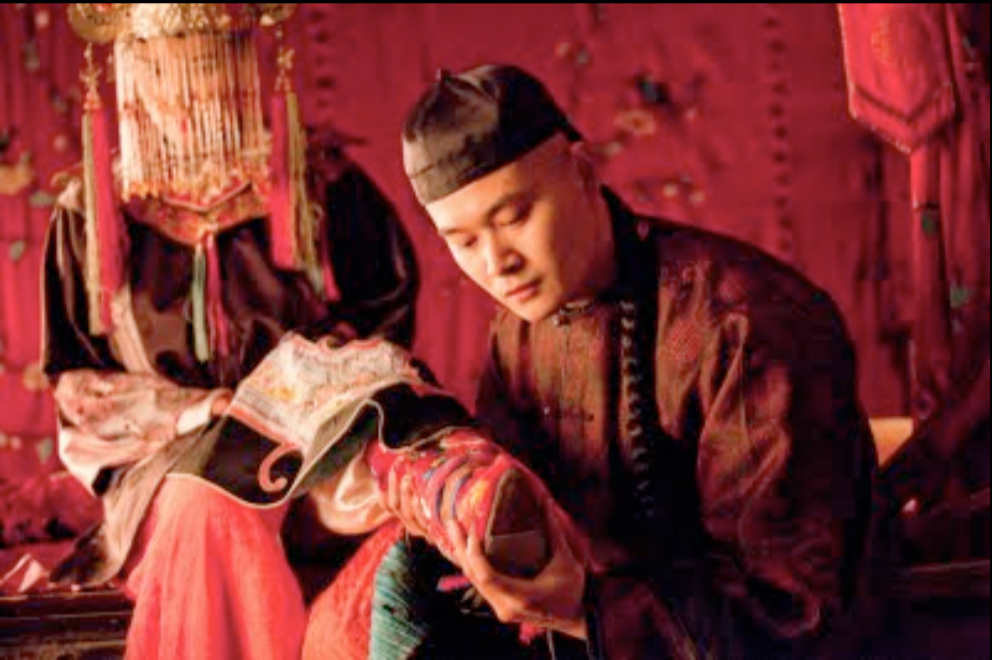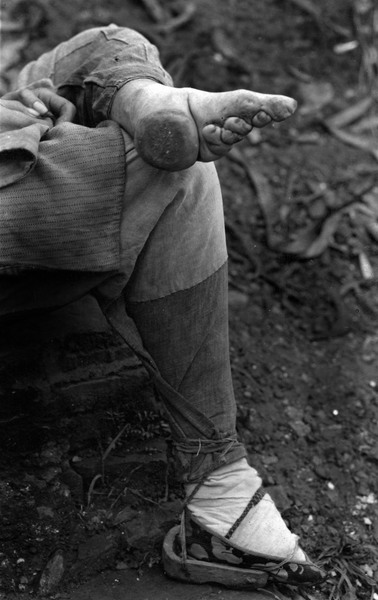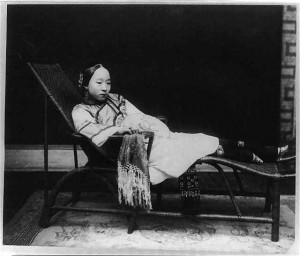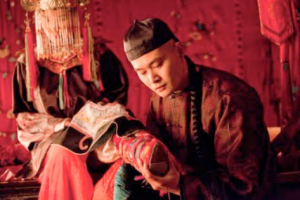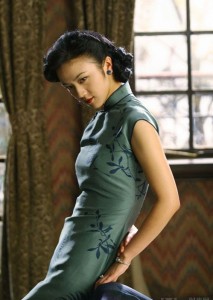
1940s Modernized Qipao Found in Tang Wei’s “Lust, Caution” movie, photograph.
Over the last few centuries, the qipao, a one-piece Chinese dress, has experienced a substantial shift in place in the Chinese fashion world. From the loose-fitting, long, concealing qipao style worn by Manchu people during the Guangxu period, to the tight-fitted, sexualizing modern day portrayal, the qipao and its socio-political implications have changed immensely. The Guangxu qipao of the late nineteenth and early twentieth century and the qipao of the 1960s highlighted very different portrayals of the female body. The modern 1940s qipao, displayed in the image to the right, emphasizes the attractiveness of the sexualized form of the female body and the older qipao of the late nineteenth and early twentieth century accentuates the importance of embroidery and the beauty in concealment.
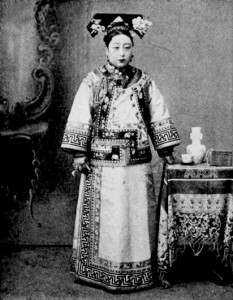
Qipao in the Guangxu Period (1875-1908) Titled: Lady Heseri, photograph, 1900.
When comparing the two images, the viewer notices the difference in color and pattern immediately. Although these two images were captured using the same medium, photography, they provide much different viewing experiences. The woman wearing qipao of the Guangxu period is pictured in black and white, so we are unable to see the true color of her dress. In addition, the photographer chose to take her picture in an area with limited to no natural light. We can see very intricate and delicate embroidery on her qipao. The green color of the woman’s qipao, represented in the above right photo, is emphasized due to the monotonous and basic tones that lie behind her. The photographer strategically placed this woman in a room with natural light. Her dress has minimal print in comparison to the woman on the left.
connotation?
The photographers may have made specific decisions when shooting each woman for a few reasons. Firstly, the woman pictured in color exists in a very different time period to the woman of the Guangxu era. The photographer taking the modernized picture has chosen to place this woman in a room that utilizes the sun’s natural light to accentuate her form and body outline. We can see the light shining on the front of her body detailing the folds in the dress and female figure. The woman in the Guangxu period is not emphasized through color. Color became more of an important factor in socio-political status as time progressed. We can the importance of embroidery in the earlier years of the qipao through the photo of the Guangxu period. The elegance in the more traditional dress lied in its concealment and detailed stitch work, rather than the modern tightfitted, simple form with minimal pattern/flowers and stitching.
Secondly, it is important to notice that both women are not looking at the camera, but are delivering very different messages. The female in the older photo holds a very straight and serious face. Perhaps if she were looking at the photographer and acknowledging him/her, it would undermine the importance and beauty in her concealing qipao. Because she does not look at the camera, she is more mysterious to the viewer and embodies the true essence of concealment, a highly attractive attribute of the time period. The woman in the 1940s picture plays a game with the viewer. She knows she is being seen, however, she is portrayed in a much more sexualized light. Her head is slightly turned towards the camera, however, she does not give us her full attention. She is teasing the viewer in a sexy and lustful way. She tilts her head in a way that almost looks down at the viewer. This decision adds another factor to the game she is playing; she is sexy in her tight-fitting, flattering qipao and therefore powerful and perhaps acting lustfully.
Lastly, it is essential that we acknowledge the difference in the way each woman is standing. The contrast in body language delivers meaningful messages to the viewer. The loose-fitting Manchu style qipao that covers the woman pictured in the older photo does not outline her body in any way. She stands up straight and allows her body to be concealed. She does not use her body in a sexual way, as the woman on the right does. This woman leans her body on an object that sits behind her and gently rests her hands behind her. She arranges her body this way to reveal her long, thin, and smooth arms and thin figure.
Both woman wear the qipao. However, they both wear very dissimilar styles that portray different ideas about what it means to be a woman and how females were portrayed in their given time periods.
two photographic female images, shot in different time and place, speak for how qipao reflects historical transformations. the historical transformation could be explored in terms of form, color, material, design denotations. the denotations then speak for different time, place, ethnic identity, and more connotations.

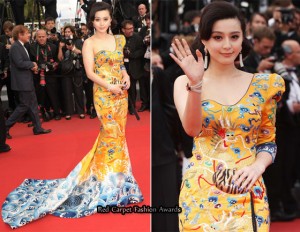

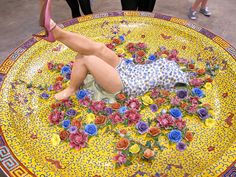
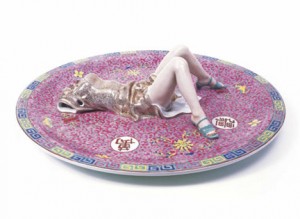

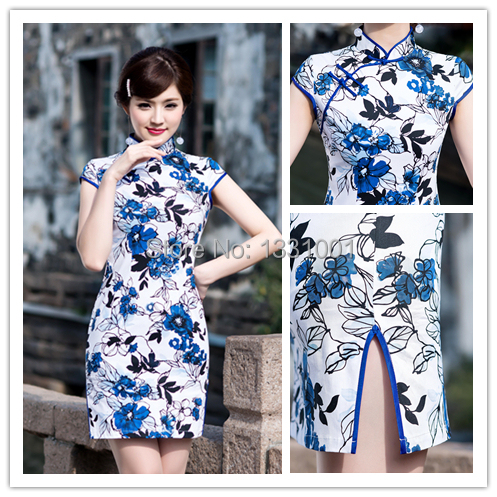
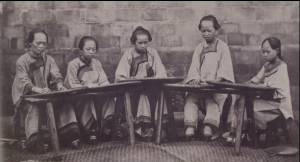 Photo: From Peabody & Essex Museum in Salem, MA [from presentation]
Photo: From Peabody & Essex Museum in Salem, MA [from presentation]